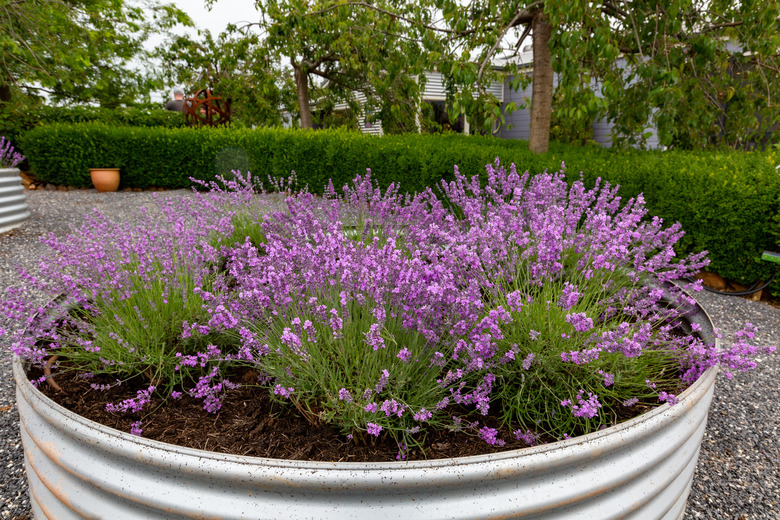Should I Cut The Dead Flowers Off My Lavender Plant?
We may receive a commission on purchases made from links.
Cutting the dead flowers off your lavender plant (Lavandula spp.) is a good habit. Deadheading cleans up the appearance of the lavender plant, prevents the seeds from spreading and may prompt reblooming depending on the variety.
Deadheading can encourage additional blooms because it interrupts the plant's reproductive cycle. If the flowers have been removed from the plant, there's a good chance the seeds inside didn't fully mature. The plant will rebloom to attempt to complete the reproductive cycle. However, some types of lavender bloom only once per year no matter what. Prune these types in the spring to enjoy a greater number of flower spikes in the summer.
Tip
Cutting off the dead flowers will encourage more blooms to form in reblooming varieties of lavender.
Which Lavender Types to Deadhead
Which Lavender Types to Deadhead
Technically, you can remove the dead flowers from every type of lavender. This will prevent the seeds from spreading and make the plant look more attractive. However, if you deadhead lavender in hopes of prompting another bloom period, you might be disappointed. Some types of lavender do rebloom, while others don't, and others bloom continuously for weeks.
For example, Spanish lavender (Lavandula stoechas, USDA zones 7-9) may bloom up to three different times throughout the year, so deadhead it regularly. On the other hand, most English lavenders (Lavandula angustifolia, zones 5-8) produce flowers that last for just three to four weeks in June or July. Deadheading them won't cause more blooms in the fall unless you grow a cultivar like Lavandula angustifolia 'Sharon Roberts.' Another English lavender cultivar, Lavandula angustifolia 'Blue Cushion,' may bloom continuously from late spring to late summer, and deadheading it ensures it stays in full, vibrant color.
Lavandula x intermedia 'Gros Bleu' is one type of lavender that should not be deadheaded. It will rebloom on old flower spikes. There's no need to remove the seemingly dead flower spikes to make room for new ones.
Cutting Dead Lavender Flowers
Cutting Dead Lavender Flowers
For best results, don't focus on just the wilted flower petals when cutting dead lavender blooms. Instead, cut to at least the base of the long, thin stem supporting the flower (called the "flower spike") with sharp, sanitized gardening shears.
If you're happy with the size of the lavender plant and the amount of flowers it produces, you don't need to do anything else. However, if you'd like to encourage the stems to produce more flowers and develop a fuller shape, snip off the top of the stem – where the foliage begins – when you cut off the dead lavender flowers.
Pruning Lavender Plants
Pruning Lavender Plants
You can also prune back lavender if the stems get too tall or leggy for your liking. However, the best time to do this is in spring well before the flower buds arrive. When the first flush of new growth can be seen at the base of the plant in the spring, trim off the top third of the stem. This keeps the plant's vertical growth in check and reduces the appearance of bare stems without stressing the plant.
